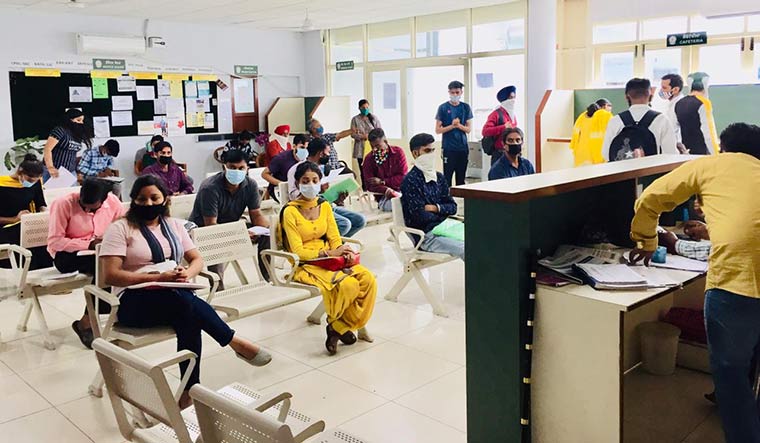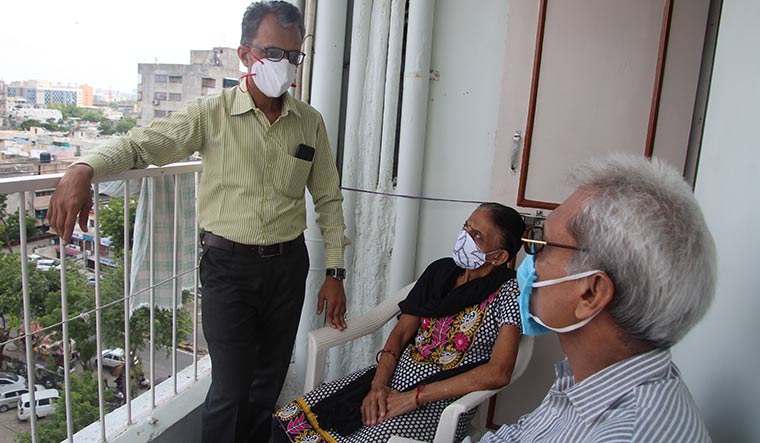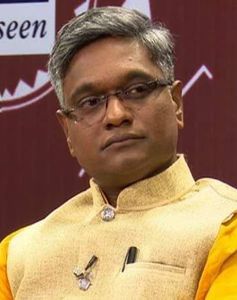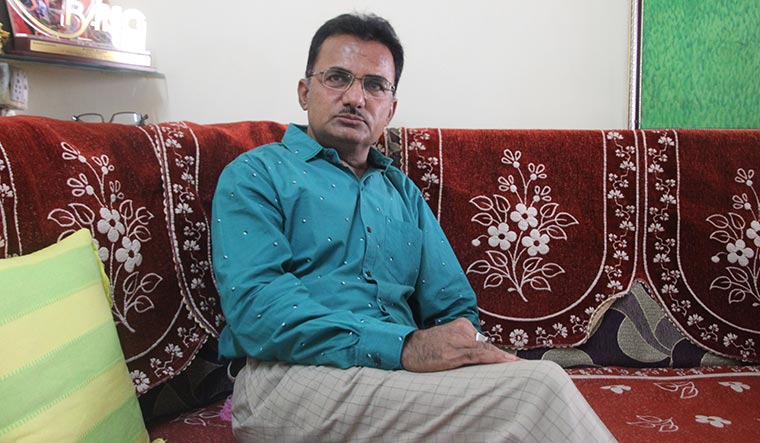Ravishankar Gopal (name changed) thought all was hunky dory when lockdown was announced and he was asked to work from home. Working for a leading IT firm in Chennai on a project, he was paid his March salary in full and on time. Things will be fine in a couple of weeks as the lockdown controls the spread of Covid-19, he thought.
He could not have been more wrong. Once his project got over in April, HR gave him two options. Either wait on the bench (IT industry parlance for employees who are not working on any project) without salary or take three month’s salary and quit.
Gopal put in his papers. His home and vehicle loans and daughter’s school fees were all hanging above his head. “Waiting on the bench was like working and then going home without salary,” he said. “Compared with that, the three month’s salary was far better—I managed my expenses with it till July.” Gopal is hopeful of finding another job soon, even if the pay is three-fourths of what he was drawing earlier.
Multiply Gopal’s woes by millions, across India’s towns and villages, and you have a very big, very human tragedy unfolding. A whopping 12 crore jobs were wiped out right after the lockdown was imposed in late March. While the numbers have been ‘improving’—job losses came down quickly to nine crore in May, 2.6 crore in June and around a crore in both July and August—the bigger worry is the story in between. A survey by the Tamil Nadu government a couple of months ago found that in 53 per cent of households at least one person had lost his job since the pandemic hit. Worse, average monthly household income had fallen by half.
There is more bad news in the fine print. The jobs that did come back are mostly in the informal sector. This means that many white collar or “office” work that sustains India’s middle class, on a steady prospering trajectory since liberalisation in the early 1990s, have been wiped out. And many would find it difficult to find a matching job quickly.
“Loss in salaried jobs are mounting,” said Mahesh Vyas, MD & CEO of the Centre for Monitoring Indian Economy, in an exclusive interview with THE WEEK (see interview on page 48). “It would be difficult to see a recovery in salaried jobs till such time as investments pick up.”
There is not much good news on that front. Despite the realisation that the Indian economy will suffer because of the effects of the lockdown when the figures finally came for the April-June quarter, it was still a penny drop moment. While the GDP decline was expected, what has dismayed North Block, where the Union finance ministry is headquartered, has been the scale of contraction—at nearly 24 per cent, India’s performance was the worst among all major economies during the pandemic.
Moreover, the downswing seemed to unilaterally reflect across India Inc as well. Combined revenues of more than 2,000 listed companies were down 24.3 per cent year-on-year in the April-June period. Manufacturing and services sector (excluding banks), mainstays of the India success story over the past three decades, was worse, at -27.44 per cent.
“About one quarter of the gross domestic output... has been wiped out,” lashed out former Union finance minister P. Chidambaram in an essay earlier this week. “Note that when output is lost, the jobs that produce that output are lost, the income that those jobs provide are lost, and the families that depend on those incomes suffer.”
The suffering is very real. Ronak Kotadia, 40, who was manager in the export department of a garment firm in Ahmedabad, had to cancel his father’s cataract operation, after he was fired one day before the procedure. “Under Mediclaim, we can get reimbursement of only Rs24,000,”he said. “I have no capacity to arrange the rest of the amount.”
Kotadia added: “Our family is suffering because of the job loss. My father, too, is suffering. But what can we do!” He got the pink slip after working for a couple of months on half salary. His wife, a teacher in a CBSE school, is only being paid 30 to 40 per cent of her salary. The family of six, including his parents and two children in classes I and VI have to manage with that income. Kotadia also has to pay a monthly EMI of Rs14,000 on his home loan.
In an ironic twist, even as the urban economy slumped, the rural economy picked up. For example, incomes from the Mahatma Gandhi National Rural Employment Guarantee Act doubled during the summer months—the government had raised allocation for the scheme, which guarantees at least 100 days of unskilled work for rural workforce—from Rs60,000 crore to more than Rs1 lakh crore to take care of the pandemic’s economic woes and the reverse migration of workers from cities to villages. Helped by a good harvest and the government largesse, agriculture and rural spending has been the only silver lining to Indian economy’s accumulating clouds.
However, any economic revival depends on urban consumption, and a reciprocal pick-up in productivity in businesses and industries. That is caught in the veritable ‘chicken-and-egg’ situation—factories and plants across the land have been reducing production (which also means lesser contract staff and wages) as they do not expect demand. And demand is not picking up, or picking up very slowly, as those who have lost their jobs or those still holding on to their jobs both limit their expenses to bare essentials.
From giant factories to small cottage industry units, this has meant lesser output. “We have revised working hours corresponding to the workload,” said Harkirat Singh, managing director of the firm that makes Woodland shoes, “As [demand] picks up in line with the governmental policies, things will start coming back to normal.”
And on the consumer side, it has translated into below capacity consumption in retail stores (except essential items) and shopping malls, flights, trains and restaurants, while cinemas are still closed on government diktat—all sectors where a sizeable chunk of discretionary spending by urban Indians takes place.
This dip in consumption is part of the problem, as Gautam Duggad, head of research (institutional equities), Motilal Oswal Financial Services said: “Sectors which are doing well are essentials—consumer staples, FMCG, pharmaceuticals and IT. Still not doing well are discretionary (areas) like retail and aviation.” Restaurateur Zorawar Kalra, whose restaurant chains include Farzi Cafe and Masala Library by Jiggs Kalra, agreed. “Restaurants that have opened are running at very low volumes and thus staffing is not at 100 per cent levels.” According to the National Restaurant Association of India, more than 30 per cent of restaurants and bars have permanently shut down over the past five months.
“Nobody gauged the distortion in value chains caused by Covid-19,”said Navneet Sharma, dean at IFIM Business School, Vijayabhoomi University. “How goods and services are produced and distributed is in a state of flux.” The only way out, as the experts would have it, sounds rather simple. “A lot of government spending, promotion of entrepreneurship or start-up activity through the removal of entry barriers, and lessening of compliance or regulatory burden on business,”Sharma said.
Some sectors may need particular handholding, considering the walloping they received. India’s tourism and hospitality industry may have seen job losses of up to 70 per cent of its workforce, according to an estimate by KPMG.
The industry’s ask? Deferment of taxes, reduction in GST and auto-renewal of licences and waiver of dues from the lockdown period, according to K.B. Kachru, chairman emeritus (South Asia), Radisson Hotel Group and vice president, Hotel Association of India. “Unless domestic travellers are incentivised, no major growth should be expected,” he said. “Any stimulus will go a long way in protecting jobs and businesses.”
After rounds of meetings, right from the Economic Task Force to NITI Aayog and the chief economic adviser, the government is said to be looking at another fresh stimulus, as a follow-up to the five tranches of measures announced by the finance minister back in May, this time aimed at the middle class. The Kamath panel’s blueprint to rejig loans, announced this week, should also help.
Meanwhile, if not the real thing, there are at least ‘green shoots’ of optimism. The finance ministry is adamant that the economy is witnessing “a sharp V-shaped recovery”, as per its monthly report for September. Former RBI governor C. Rangarajan a few days ago said in a paper in the Indian Public Policy Review that despite all forecasts of the annual GDP declining this financial year, “a small positive growth may not be ruled out for the Indian economy in 2020-2021”. The reason? Sectors like agriculture, public administration, defence and other services might still perform well.
There are also expectations that public consumption will pick up, which in turn will lead to an overall recovery in the economy—the upcoming festive season will be the crucial barometer. “Shopping and retail business are growing by every passing week,” says Yogeshwar Sharma, CEO and executive director, Select Citywalk, one of the biggest malls in the country. “Festive season will be close to 75 per cent of last year.” On the job front, the likes of LinkedIn and naukri.com are reporting fresh hiring, even if the number of applicants has gone up. LinkedIn said hiring on the platform has gone up 35 per cent since the nadir of April, when it plunged 50 per cent year-on-year.
Then, of course, there are hopes that pin everything on what the heart, not the head, tells you. “Indians are eternally optimistic, it is in our nature,” said Kalra. “We also like to buck international trends, so we are hoping that recovery will be quicker here as compared with other parts of the world.”
Until that redemption arrives, ‘tomorrow is another day’ is the credo by which those burnt by the job massacre are taking it. Applying for fresh jobs, circulating their CVs, hoping for a turnaround in their fortunes…and minimising expenses. Kotadia gives an example, “If my son asks for a 0500 T-shirt, I will convince him to settle for one that comes for 0100-0200 and tell him that we will buy the one he likes during Diwali.”
—With Lakshmi Subramanian and Nandini Oza
INHOSPITABLE SECTOR
Jaitley was a senior marketing manager of a luxury hotel chain in Bengaluru when the pandemic struck. There was no salary in April, and he was fired in May. With more than a decade of experience in the hotel industry, including stints in MNC hotel chains, Jaitley had had a smooth run until now. So the sudden job loss came as shock.
“Since my wife is also employed [as an HR professional], I did not face any sudden financial problems [after the job loss],” he says. “Plus, I have the support of my parents who are currently staying with me. My father retired from a semi-government firm. Also, I do not have any loans, as I am yet to invest in a property in Bengaluru.”
Jaitley is aggressively searching for a new job, but there are hardly any opportunities in the hospitality segment now. “Many of my friends who are in hospitality have either been laid off or have had salary cuts,” he says. “However, I still hope that this, too, will pass, and I will find a job sooner or later. As I am from the marketing field, I feel that I will get a job in other sectors as well.”
—Abhinav Singh
MEDIA MIRE
Sonar, output editor in a regional television channel, was laid off overnight. The company had already initiated 50 per cent salary cuts across brackets for a few months, citing a steep decline in revenues. In August, Sonar and several other senior employees were asked to leave.
“I had gone to office for some work, but was instead called in and asked either to resign right away or be prepared to get terminated,” he says. “I had been part of the team for over 13 years, right from inception. So, this shocked me.”
Sonar’s wife is working with a few non-governmental organisations. So, he has not had to worry about the day-to-day expenses of his family, at least for now. “My savings will help me pay the home loan instalments. But, then again, I was saving money for other things, which will now take a backseat,” he says.
Sonar is not keen on joining another media organisation until there is an improvement in the overall situation. Instead, he feels now is the time to embark on an entrepreneurial journey—perhaps, a small production company.
—Nachiket Kelkar
BENCHED BRAIN
Patil was a consultant with an IT company in Mumbai. He was part of a team that provided software services and support for an international airport. In early March, he and many others were released from the project as the client had announced budget cuts. Though Patil was kept on the “benched” workforce initially, in July he was asked to resign.
Patil’s family includes his wife and son; his parents live next door. He was the only earning member in the family, and has a housing loan. “I was saving a part of my salary every month, which has helped me tide over the crisis over the last month and a half,” he says. “But if I do not get a job soon, the savings will not be enough, particularly since I have my home loan to pay.”
Barring the essential food and grocery requirements, he has cut down on most of his spends right now. Patil, who has a specialisation in geographic information systems, is now putting in long hours searching for new jobs. “I did get responses from a few firms,” he says. “But they say I will have to wait for a few months, may be until late December, before they decide on hiring. That is a long time.”
—Nachiket Kelkar
RETIREMENT EXTENDED
After 20 years of service in a pharma major in Ahmedabad, Tushar Shelat, was looking forward to retire at 60. It was all going smooth, until the pandemic. For three months, he was paid half his salary. Then, the company paid him one-month advance salary and fired him. Thus ended his journey from chemist to assistant manager (production).
Shelat’s daughter is doing her BSc, and his younger son had just secured admission in a university in Canada. His five-member family, which includes his mother, was totally dependent on his salary.
“My mother does get pension. However, that is for her own use,” he says. What worries him most is the education loan of 09 lakh taken for his son; monthly EMI of which is around 010,000.
Shelat, however, is among the lucky few who have found another job—though it pays only half of what he was earning. “I got this job through friends,” he says. “Many others, who were shunted out with me, are still scouting for jobs. Had I been in my previous company, I would have worked till 60. Now, I have no option but to work till I am 65.”
—Nandini Oza







